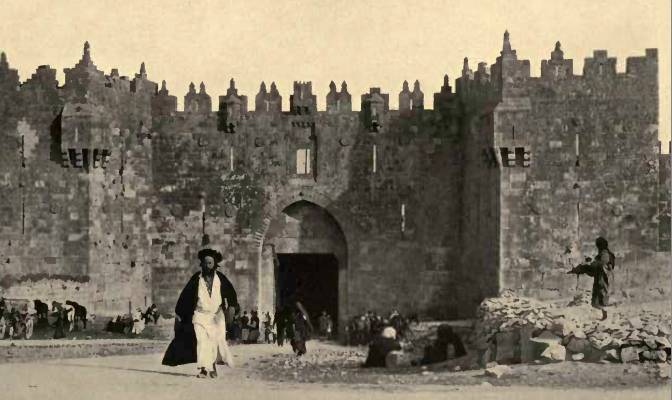Why was it, wondered Walid Shoebat from Bethlehem, that “on June 4th 1967 I was a Jordanian and overnight I became a Palestinian.”
By Jerold Auerbach, The Algemeiner
Millennia before Palestinians appeared on the world stage following the Six-Day War, the “West Bank” was already known as Judea and Samaria. “Palestine” dates from the League of Nations Mandate (1923) that granted England governing power over the land, including Trans-Jordan, that was previously controlled by the defeated Ottoman Empire.
The Mandate recognized “the historical connection of the Jewish people with Palestine.” “Palestinians” were not mentioned; Arabs in the Land of Israel lacked national consciousness as a people. Two decades after the birth of Israel, following the Six-Day War, they borrowed so extensively from Jewish and Zionist sources as to virtually constitute historical plagiarism.
“Palestine” had emerged as an abbreviation of “Syria-Palestine,” imposed by Roman conquerors in the 2nd century CE to obliterate the Jews’ connection to their biblical homeland. Modern conceptions of Palestine did not appear until the 19th century, when British artists and writers began to explore the ”Holy Land.” Jews, wrote Rev. Alexander Keith, are “a people without a country” while “their own land . . . [is] a country without a people.” Several years later Lord Ashley Cooper described “a country without a nation” needing “a nation without a country.” That nation, he asserted, was “the ancient and rightful lords of the soil, the Jews!”
During the early years of the British Mandate, Arabs in Palestine still had little awareness of a distinctive national identity. Testifying before the Peel Commission in 1937, Syrian leader Auni Bey Abdul-Nadi asserted: “There is no such country as Palestine. … ‘Palestine’ is alien to us. It is the Zionists who introduced it.”
Even Columbia history professor Rashid Khalidi, an expert on Palestinian identity, would acknowledge that before World War I “Palestine” did not exist in Arab consciousness. Zionist land development served as a magnet for Arabs from Middle Eastern countries who came to Palestine in search of a better life and eventually became “Palestinians.”
Shortly before the birth of the State of Israel, Arab historian Philip Hitti conceded: “There is no such thing as Palestine in history.” Even the UN General Assembly Resolution in 1947 referred to the area west of the Jordan River as Judea and Samaria. A distinctive Palestinian identity did not emerge until the humiliating Arab defeat in the Six-Day War.
Why was it, wondered Walid Shoebat from Bethlehem, that “on June 4th 1967 I was a Jordanian and overnight I became a Palestinian. … We considered ourselves Jordanian until the Jews returned to Jerusalem.”
Belated Palestinian Identity – Derivation from Jewish Sources
Most striking about the belated Palestinian identity is its derivation from Jewish sources. Like other Middle Eastern Muslims, Palestinians claim Ishmael, Abraham’s son by his servant Hagar, as their ancestral link to “their” patriarch Abraham. The Canaanites have been adopted as their own victimized ancestral people. Ironically, their insistent claim of a “right to return” for Palestinian refugees (and their descendants) emulates the Israeli Law of Return. Palestinian teenagers have preposterously compared themselves to Anne Frank, suffering from an Israeli “Holocaust.”
Writing in the Jewish News Service (February 9), Zionist activist and author Lee Bender points out that one-quarter of the Palestinian localities in Israel, Judea and Samaria have ancient biblical names. Among them: Bethlehem (Beit Lechem), Hebron (Chevron), Beitin (Beit El), Jenin (Ein Ganim), Silwan (Shiloach), and Tequa (Tekoa).
Allegations endlessly repeated by the United Nations, Palestinians, and, to be sure, The New York Times, that Israel has no legitimate claim to the territory now commonly known as the “West Bank” (of Jordan) are fallacious, if not mendacious. They lack any familiarity with the history of Jews in the Land of Israel — and the absence of any identifiable “Palestinian” presence or identity until quite recently. But old falsehoods never die; they may not even fade away.
Jerold S. Auerbach is the author of “Print to Fit: The New York Times, Zionism and Israel,” 1896-2016, to be published this month by Academic Studies Press.
MAKE THE LAND OF ISRAEL EVEN MORE BEAUTIFUL!
PLANT YOUR VERY OWN FRUIT TREES IN ISRAEL!
Farmers near the Gaza border lost family, friends and workers. Spring is here, and they desperately need help to replant the farms. Join us in blessing the People and Land of Israel.
“I will ordain My blessing for you…” (Leviticus 25:4)



